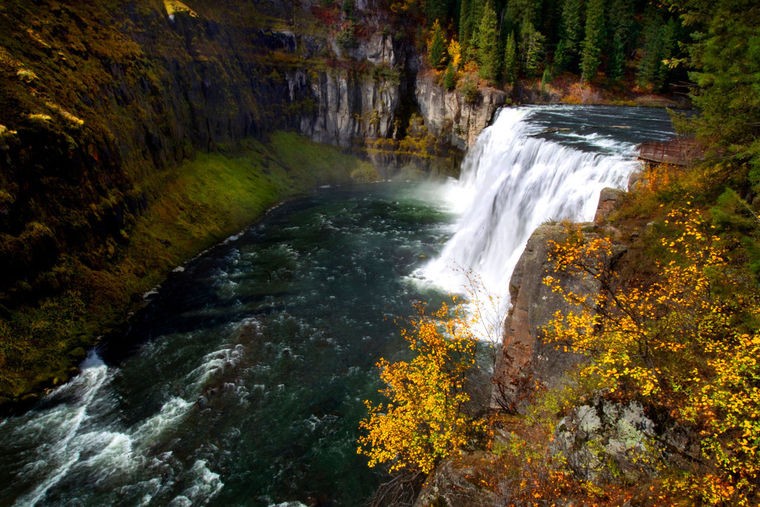ASHTON — Mesa Falls is an iconic sight in East Idaho.
A popular location for tourists, Mesa Falls is the only free-flowing falls in the Columbia River System.
What many people don’t know is that Mesa Falls was almost dammed by the Montana Power Company in the 1970s.
Monte Later, a resident of Ashton, didn’t want that to happen.
Later grew up in the area surrounding Mesa Falls.
In a book he contributed to entitled “100 Years: Idaho and Its Parks,” Later said that he was a frequent visitor to Mesa Falls, which he thought was on land owned by the National Forest Service.
He said he was “shocked” to hear that the falls were actually owned by Montana Power.
“I learned that the company’s two greatest concerns were the tremendous potential liability with the public scrambling around the steep, slick trails beside sheer, high cliffs,” Later said. “Second, what would public reaction be to partially de-watering the falls for a power project?”
Later thought that when he first got involved, he said he was “probably in over my head.”
He eventually came across a proposal submitted by Montana Power that would divert most of the water from Mesa Falls to a powerhouse at the base of the falls.
“The threat was very real,” Later said. “And we were short of ideas to protect the falls.”
At one point, Later wanted to see if the land could be sold to the public by Montana Power, but he couldn’t find a way to fund the transfer.
Later and his friend, Bob Meinen, who was also an advocate for the falls, contacted several politicians in the Idaho State Legislature. One of them, Rep. Reed Hansen, decided to make a stand for Mesa Falls.
“The Legislature wasn’t interested in getting money together for a purchase,” Later said. “We had to get a limit of the stream flow to take the financial incentive out of it.”
Later explained that a limited stream flow is when state laws regulate the amount of water that has to be running through the river at all times. Setting a minimum amount of water that had to be flowing over the falls would make building a dam fruitless due to the low amount of water, and therefore potential power, that would be left over.
Hansen managed to successfully get legislation passed that created a limited stream flow for Mesa Falls.
The minutes from a 1987 meeting of the Resources and Environment Committee in the Idaho Legislature show the approval by the committee of an application to limit flow on Henry’s Fork, and that an appeal of the committee’s decision from Montana Power was dropped.
In March of that year, the legislation limiting stream flow, SCR 103, was presented to the Idaho Legislature and read to state representatives.
Two months later, the new law regulating water flow in the Mesa Falls portion of Henry’s Fork was finalized.
Victory, however, may have come at a cost.
“Reed Hansen was able to secure a minimum stream flow limitation, but it hurt him politically,” Later said. “Some believed he lost re-election over this issue, but I don’t know any other way we could have saved it.”
Eventually Later and his group of allies managed to convince Bruce Bugbee, a specialist in environmental real estate hired by Montana Power, to trade the Mesa Falls land for another area that the company could have.
“I was elated,” Later said.
According to the U.S. Forest Service’s webpage about Mesa Falls, today the Upper and Lower Mesa Falls are “the last prominent waterfalls on the Snake River to resist human control.”



